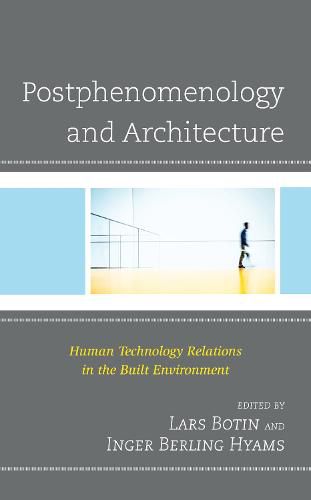Readings Newsletter
Become a Readings Member to make your shopping experience even easier.
Sign in or sign up for free!
You’re not far away from qualifying for FREE standard shipping within Australia
You’ve qualified for FREE standard shipping within Australia
The cart is loading…






Architecture and urban design are rarely considered as technology, but more frequently as a result of artistic creativity performed by gifted individuals. Postphenomenology and Architecture: Human Technology Relations in the Built Environment considers buildings and cities as technologies, from a postphenomenological perspective. This book argues that buildings and the furniture of cities-like bike lanes, benches, and bus stops-are inscribed in a conceptual framework of multistability, which is to say that they fulfill different purposes over time. Yet, there are qualities in the built environment that are long lasting and immutable, and transcend temporal functionality and ephemeral efficiency. The contributors show how different perceptions, practices, and interpretations are tangible and visible as we engage with these technologies. In addition, several of the chapters critically assess the influence of Martin Heidegger in modern philosophy of architecture., this book reads Heidegger in the perspective of architecture and urban design as technology, shedding light on what it means to build and dwell.
$9.00 standard shipping within Australia
FREE standard shipping within Australia for orders over $100.00
Express & International shipping calculated at checkout
Architecture and urban design are rarely considered as technology, but more frequently as a result of artistic creativity performed by gifted individuals. Postphenomenology and Architecture: Human Technology Relations in the Built Environment considers buildings and cities as technologies, from a postphenomenological perspective. This book argues that buildings and the furniture of cities-like bike lanes, benches, and bus stops-are inscribed in a conceptual framework of multistability, which is to say that they fulfill different purposes over time. Yet, there are qualities in the built environment that are long lasting and immutable, and transcend temporal functionality and ephemeral efficiency. The contributors show how different perceptions, practices, and interpretations are tangible and visible as we engage with these technologies. In addition, several of the chapters critically assess the influence of Martin Heidegger in modern philosophy of architecture., this book reads Heidegger in the perspective of architecture and urban design as technology, shedding light on what it means to build and dwell.